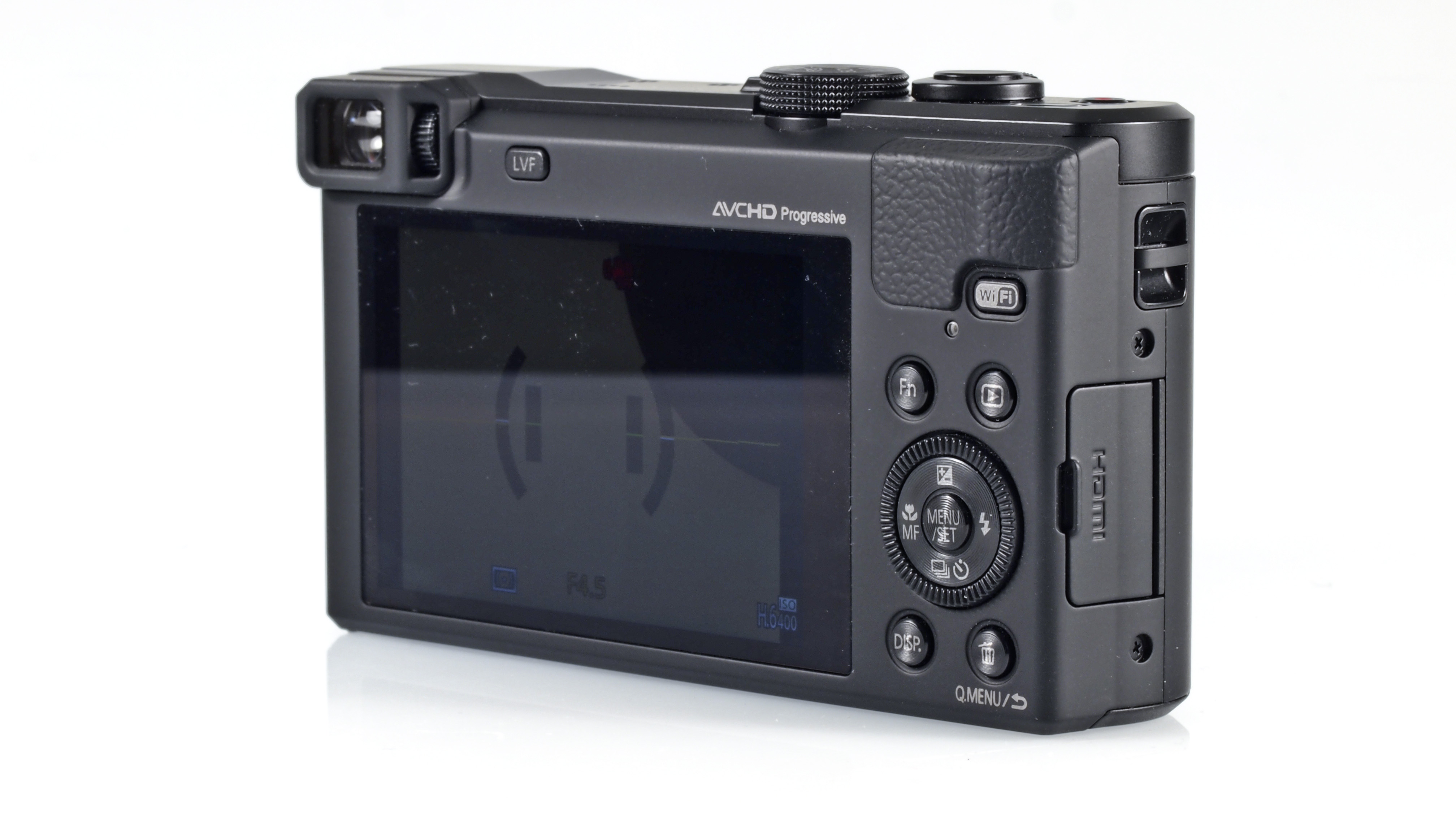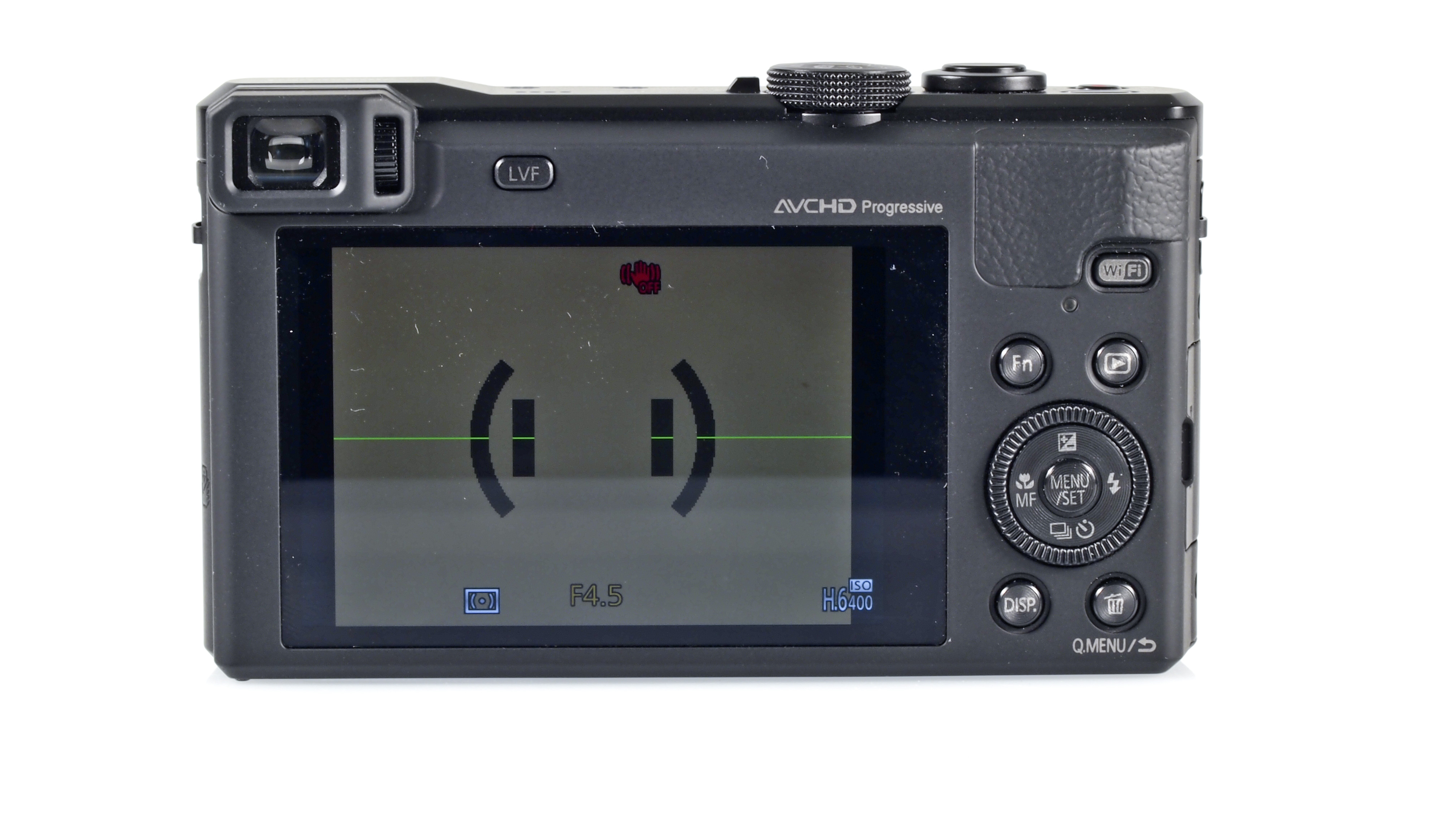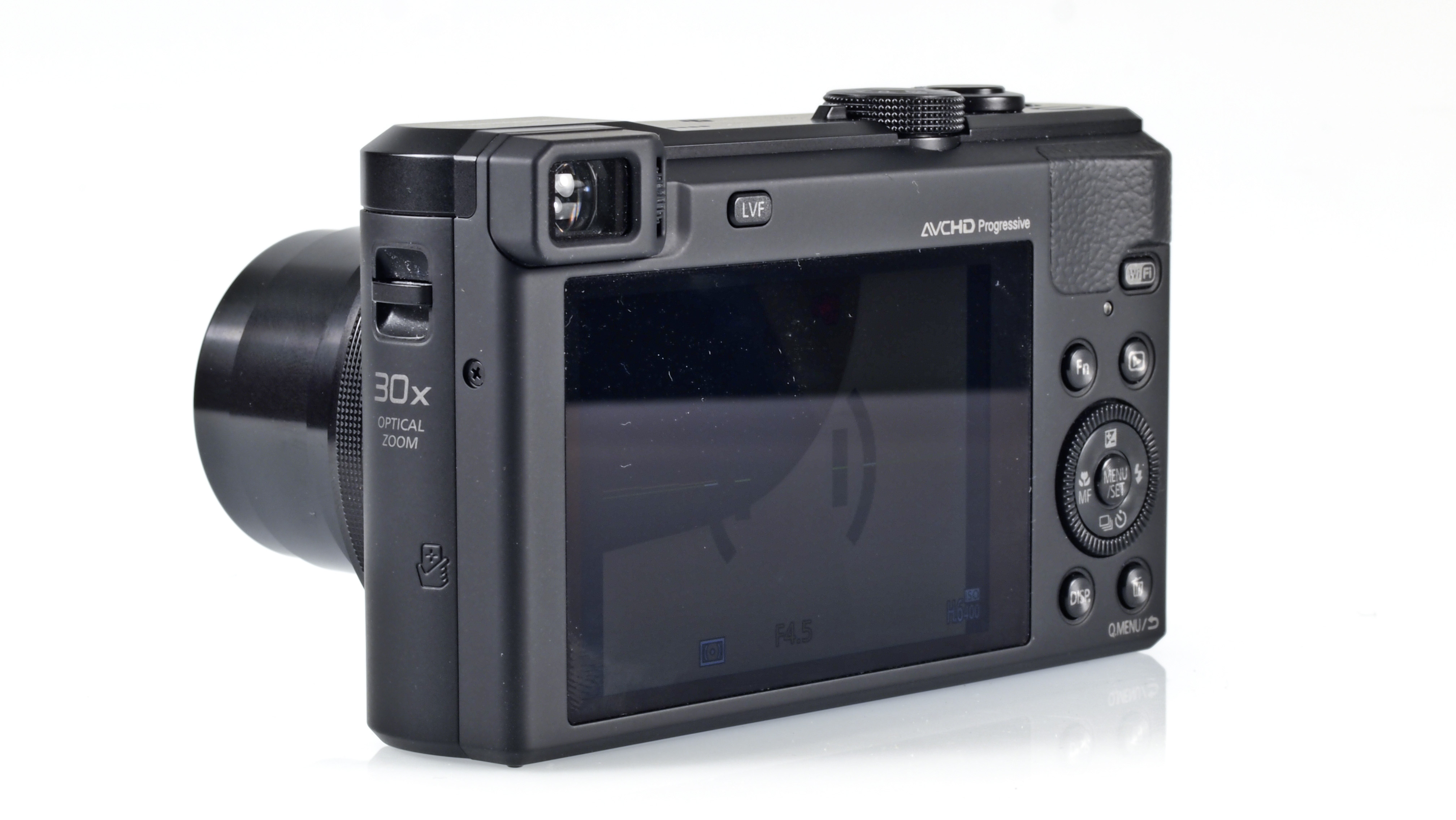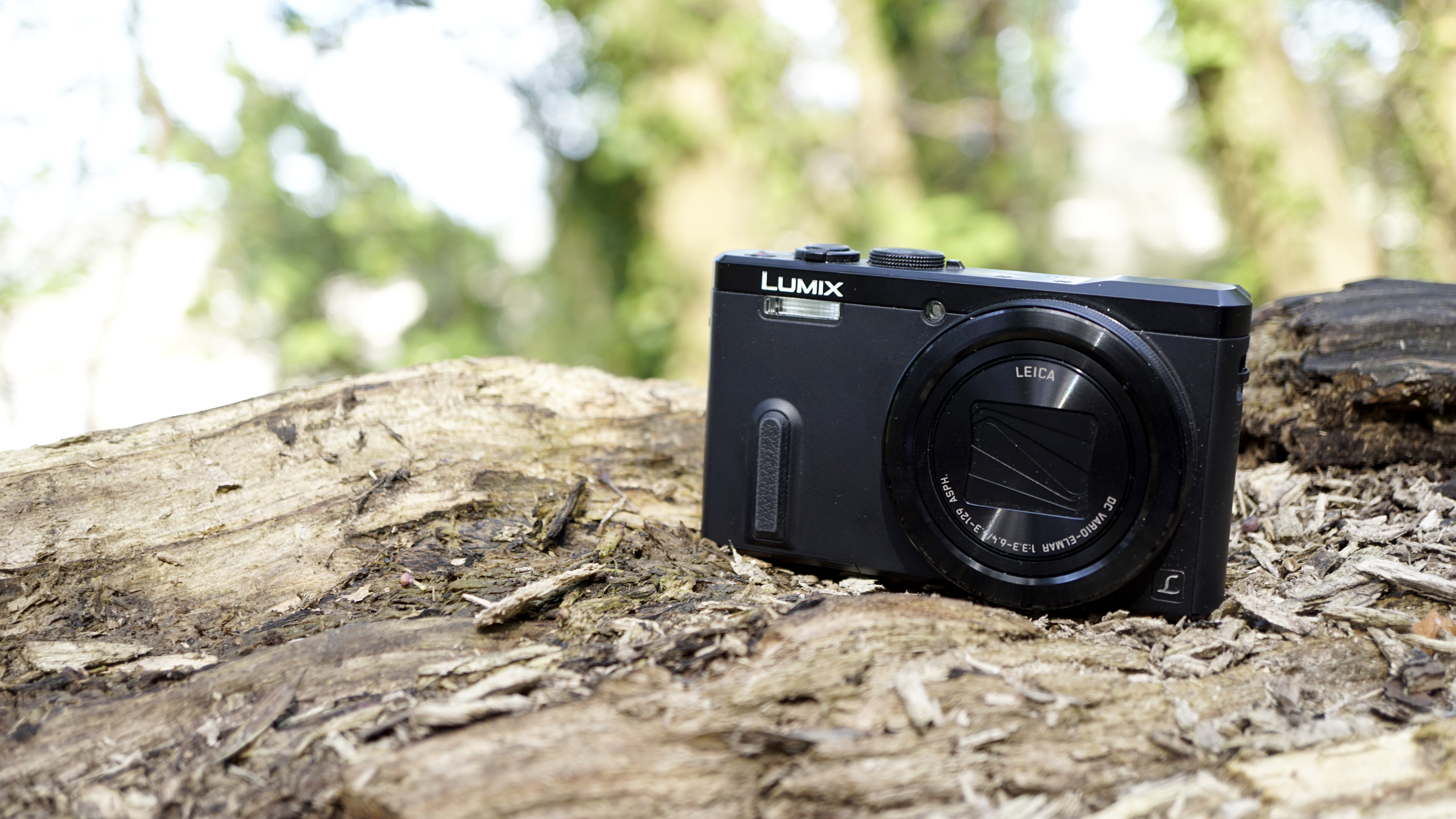Why you can trust TechRadar
The additions and changes noted above have affected the size and handling of the TZ60 if you compare it to its predecessor. Firstly, it's noticeably larger both in height and depth, but despite this increase in size it's still easily pocketable.
While the increase in size generally makes for a better and more comfortable shooting experience, the small flash on the front of the camera has been shifted close to the top right-hand corner of the camera's body. People with larger hands will need to watch out that they don't cover the flash with a finger when using the camera.

The increase in optical zoom from 20x to 30x has only had a marginal effect on the depth of the camera, as Panasonic has cleverly developed a stabilisation system that moves out of the way of the lens barrel when retracted to retain the compact size.
A new control ring around the lens enables the quick adjustment of a variety of settings depending on the mode you're in. The amount of tension in the rotation is just right, enabling smooth and accurate setting selections that are unlikely to be accidentally knocked.
There's even the option to switch on a click sound effect for audible feedback, although after some initial amusement it quickly became annoying, so I switched it off.
On the back of the camera, the Q button gives direct access to the Quick Menu. This reveals a selection of options that are adjustable using the control ring. These include aperture, sensitivity, effects, aspect ratio, and white balance by default, but they can be customised depending on your preferences.
They can then be navigated using the left and right navigation dial keys. Once the desired option is selected the ring can be used to reach the value required.
Sign up for breaking news, reviews, opinion, top tech deals, and more.
Using either the large, bright LCD or the small viewfinder gives you a good visual representation of the image as it will be captured. They give a clear display of both the scene before you and the camera's settings and selected options.

We used the camera on a series of relatively bright British winter days, and the screen coped well, with relatively few issues with reflections. In brighter conditions the high gloss surface could prove difficult to view, but with the new EVF that's not an issue. The display is bright, detailed and well saturated when previewing and reviewing images as well as checking through menu options.
The absence of a touchscreen for fast, direct access to settings and AF point selection is disappointing, but to a certain degree this is compensated by the lens ring.
Menu navigation and usability take a leap forward with the addition of the lens ring, and it's well worth taking the time to familiarise yourself with it and customise the settings. It certainly improves the already excellent shooting experience and makes the camera very pleasant to control.
Viewfinder
The new 0.2-inch, 200,000-dot viewfinder is a welcome addition and, despite its small size, it's clear and bright. It's a marked improvement over the one on the Panasonic LF1 thanks to the extra optic which helps to reduce chromatic aberration and improve overall quality. You can also see and navigate the menu options through the viewfinder, which comes in handy in bright locations where the LCD image is hard to see.

Shooting guides such as the Rule of Thirds have been extended on the TZ60, with a new collection of curved and diagonal guidelines. These may seem a little gimmicky at first, but they make it easier to line up and capture abstract shots, and they work quite well with the Creative Controls (effects such as Dynamic Monochrome, Impressive Art and Cross Process accessed via the mode dial).
The TZ60's Wi-Fi and NFC functionality are both straightforward to use. The NFC option enables the camera and a smartphone with the requisite technology to communicate with a quick touch.
Connecting the camera's Wi-Fi system to a phone without NFC technology initially requires a little more work, since a QR code is displayed on the camera and this needs to be scanned by the phone. However, it works well and once this has been done, future connections can be made simply by recalling the settings.
Both connection systems allow you to control camera's settings and access stored images relatively easily, depending on the mode selected. While the app offers a good degree of adjustment, it's not possible to switch exposure mode or change white balance or sensitivity in Manual mode.
As is fairly often the case, the app is also a bit limited when it comes to sharing, as images have to be transferred to the phone before they can be shared on social network sites. However, you can create collages from the images that you've taken, which is a fun, if limited, feature.
As with the TZ40, the TZ60 features GPS and GLONASS for geo-tagging your pictures. If you're worried about this feature draining battery life then there's also the option to geo-tag directly from the Panasonic Smartphone app.
Ali Jennings is the imaging lab manager for Future Publishing's Photography portfolio. Using Imatest Master and DxO Analyser he produces the image quality tests for all new cameras and lenses review in TechRadar's cameras channel. Ali has been shooting digital since the early nineties and joined Future's Photography portfolio back in 2003.
